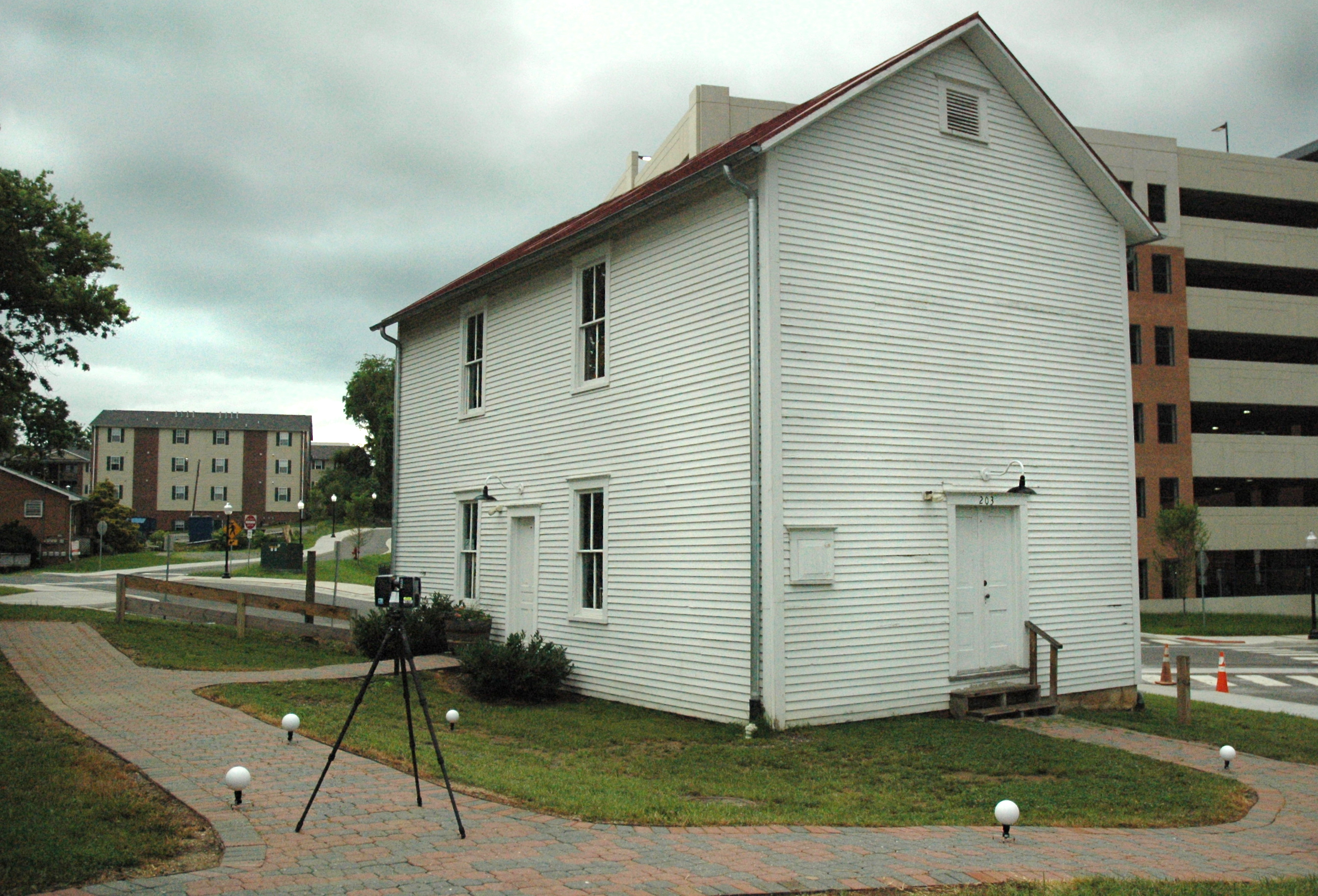Faculty members preserve local history through art and technology

Thomas Tucker, an associate professor in the School of Visual Arts at Virginia Tech is using his background in 3-D scanning and modeling to preserve the history of St. Luke and Odd Fellows Hall in Blacksburg, Va.
Today, the simple two-story building standing on Turner Street in Blacksburg, Va. seems out of place sandwiched between a parking garage, a Wendy’s, and a Buffalo Wild Wings. However, when it was first built at the beginning of the 20th century, the building was a gathering place at the heart of the New Town African American community.
To preserve the history of the community that filled the building and surrounding area, Tucker is working with scanning technology to create an educational video game and augmented reality models of the buildings that once stood in the area.
Tucker used a FARO laser scanner to create a complete 3-D model of the structure. He completed dozens of scans of both the interior and exterior of the building, using three spheres to triangulate the data, creating a point cloud comprising millions of points. The point cloud is then used to create a framework for 3-D modeling, and in this case, that modeling is being used to build an interactive game that will allow participants to virtually explore the building and learn about its history.
The origins of the hall date back to 1905, when members of the Odd Fellows and Order of St. Luke organizations purchased the lot and subsequently constructed the building with volunteer labor. It served as the social gathering place for the African American community, holding dances, dinners, and weddings through the mid 1960s. The second floor served as a private meeting area for the Odd Fellows and Order of St. Luke organizations.
“One of the reasons why we wanted to do this project was to showcase how this technology can be used to capture the history of this area. There is a rich history here, and we are interested in telling the story of a community that is almost completely lost,” said Tucker. “With this community, there’s not much information out there and there are just a few surviving members, so we are trying to capture what we can before it has vanished.”
Monthly meetings with the with surviving residents of New Town and members of the St. Luke and Odd Fellows organizations have provided valuable opportunities for capturing their stories through interviews and taking photos to incorporate their likenesses into the game.
Tucker has been working with this technology for almost a decade, starting with augmented and virtual reality projects in the Middle East to create virtual reconstructions of historic sites in order to preserve their history. While the Odd Fellows project is similar to Tucker’s previous projects using technology to preserve the history of places and people, it has resonated with him on a new level.
“When I was working on projects in the Middle East, it was very distant. It wasn’t my culture; it wasn’t my heritage. But when you are within and community and you’re doing one-on–one conversations, it has a huge impact. I’ve had some really nice emotional time with this, getting know the history and the stories,” Tucker said.
In addition to the game, Todd Ogle, the senior director for networked knowledge environments at Virginia Tech’s department of Technology-enhanced Learning and Online Strategies is working on a related augmented reality project to recreate the buildings of New Town as detailed 3-D renderings. Using an iPad to scan printed markers triggers these renderings anywhere. Additionally, users can stand outdoors in the original location of New Town and virtually view the buildings as they would have appeared there in the past.
The team plans to release the educational game to area fifth-grade classrooms in February as part of African-American History Month.









